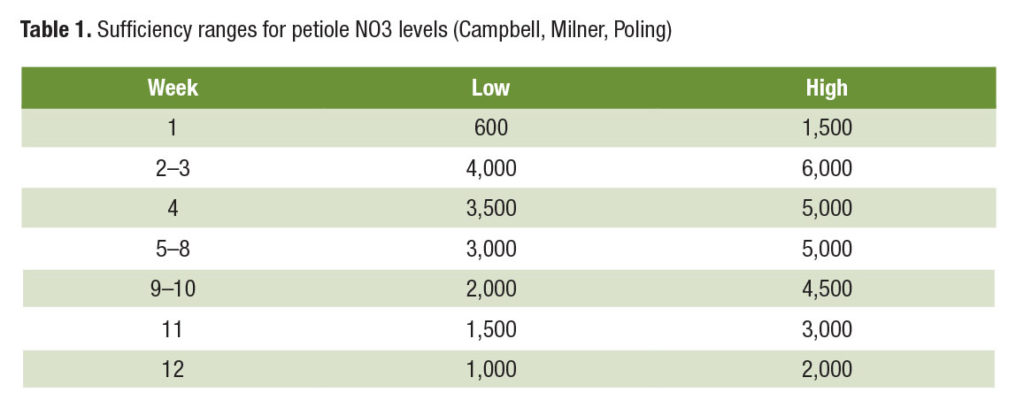
By Jeff Cook
Growing quality plasticulture strawberries begins with an understanding of your soil and proper fertilization of the crop.
Start with a Soil Sample
A soil sample should be taken a minimum of two months prior to fumigation and bed formation. This is critical to be sure you have enough time to adjust the pH up to between 6.0 and 6.5. Liming should be done with dolomitic lime unless you have excessive amounts of magnesium in your soil. If this is the case, you could choose to use calcitic lime.
Prior to bed formation, fertilize according to your soil test and apply 60 pounds of nitrogen (N). The only exception is phosphorous (P). You should apply at least 60 pounds of P even if the soil sample does not recommend any. Phosphorous is very important in root development, and healthy roots are critical as spring approaches. Because many growers in Georgia and the Southeast fertilize with potassium nitrate and calcium nitrate during the season, they will often start off with a 60-60-60 blend prior to bed formation.
The nutrients applied prior to planting help with root development and branch crown formation through the fall and late winter. Plants should be approximately 8 inches in diameter by late December. Overfertilization in the fall and winter can cause excessive top growth that can reduce starches in the roots and decrease productivity the following spring. By late spring, growers hope to have plants with four to five branch crowns.
Take Tissue Samples
In January, it is very important to take a tissue sample. This sample provides a baseline and shows what the plant has taken up and what may be deficient. More importantly, it shows the boron (B) level in the plant. If boron is deficient, it should be applied through the drip at this time. The sufficiency range for B is 25 to 60 ppm, but I recommend growers apply B if plants are below 40 ppm. Boron is very important in pollination and fruit quality, especially early in the season.
Tissue sampling should be initiated after spring growth begins and should be done every two weeks. It is important to take tissue samples at the same time of day throughout the season so that results are comparable. A proper sample is 25 recently matured trifoliate leaves. This sample should be separated into leaves and petioles[AB1] . Most university testing facilities can run these tests for growers. The leaves are used to determine phosphorous, potassium, calcium, magnesium, sulfur and minor elements; the petioles are used to determine the nitrate nitrogen (NO3-N).
Nitrogen Management
Growers typically begin with 0.5 to 0.75 pounds of N per acre per day in late winter prior to bloom. Once plants are producing fruit, demand for nutrients will increase so growers should plan on increasing N rates to 1 pound of N per acre per day. This should be monitored using the petiole sampling. Nitrogen management is critical in strawberries. Under-fertilization can obviously reduce yields. Conversely, too much nitrogen can cause quality issues in the fruit. Excessive plant size can have negative impacts on the fruit in other ways. Spray coverage is decreased with excessive growth, and pickers have difficulty locating fruit.
Soil Considerations
With varying soil types in the Southeast, it is important to manage fertility accordingly. Sandier soils have lower water-holding capacities and are poor at holding nutrients as well. To mitigate this, it is recommended to apply fertilizer in every irrigation (fertigation). On heavier clay soils, the frequency of fertilizer application can be reduced because those soils are able to hold nutrients in the root zone. Matching your fertigation schedule to the soil, crop and weather can be tricky. However, doing so will ensure healthy plants and increased yields.
Visit smallfruits.org or contact your county agent for more information.
Jeff Cook is a University of Georgia Cooperative Extension ag and natural resources agent for Taylor and Peach counties.









